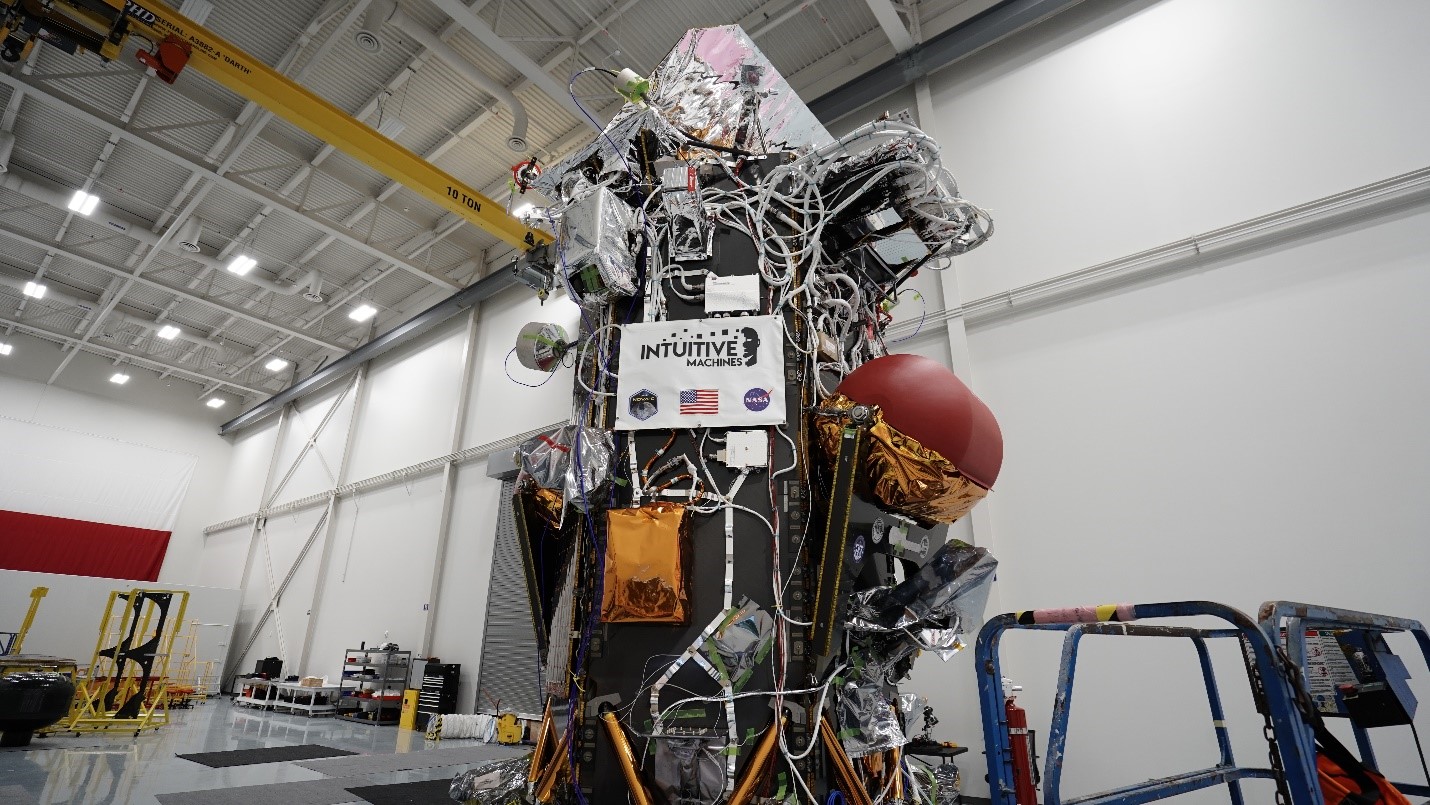The six NASA payloads aboard Intuitive Machines’ IM-1 mission include:
- LN-1 (Lunar Node 1 Navigation Demonstrator)- A small, CubeSat-sized flight hardware experiment that integrates navigation and communication functionality for autonomous navigation to support future surface and orbital operations. Principal investigator: Dr. Evan Anzalone, NASA’s Marshall Space Flight Center
- LRA (Laser Retroreflector Array) - A collection of eight retroreflectors that enable precision laser ranging, which is a measurement of the distance between an orbiting or landing spacecraft to the reflector on the lander. LRA is a passive optical instrument and will function as a permanent location marker on the Moon for decades to come. Principal investigator: Dr. Xiaoli Sun, NASA’s Goddard Space Flight Center
- NDL (Navigation Doppler Lidar for Precise Velocity and Range Sensing) - A Lidar-based (Light Detection and Ranging) descent and landing sensor. This instrument operates on the same principles of radar but uses pulses from a laser emitted through three optical telescopes. NDL will measure vehicle velocity (speed and direction) and altitude (distance to surface) with high precision during descent to touchdown. Principal investigator: Dr. Farzin Amzajerdian, NASA’s Langley Research Center
- RFMG (Radio Frequency Mass Gauge) - A rocket propellant gauge used to measure the amount of spacecraft propellant in a low-gravity space environment. Using sensor technology, RFMG will measure the amount, or mass, of cryogenic propellants in Nova-C’s tanks, providing data that can help predict propellant usage on future missions. Principal investigator: Dr. Greg Zimmerli, NASA’s Glenn Research Center
- ROLSES (Radio-wave Observations at the Lunar Surface of the Photoelectron Sheath) - Four antennas and a low-frequency radio receiver system designed to study the dynamic radio energy environment near the lunar surface and determine how natural and human-generated activity near the surface interacts with science investigations. It will also detect radio emissions from the Sun, Jupiter, and Earth, as well as dust impacting the surface of the Moon. Principal investigator: Dr. Nat Gopalswamy, NASA Goddard
- SCALPSS (Stereo Cameras for Lunar Plume-Surface Studies) - A suite of four cameras to capture stereo and still images of the dust plume created by the lander’s engine as it begins its descent to the lunar surface until after the engine shuts off. Principal investigator: Michelle Munk, NASA Langley
You must log in or register to comment.


